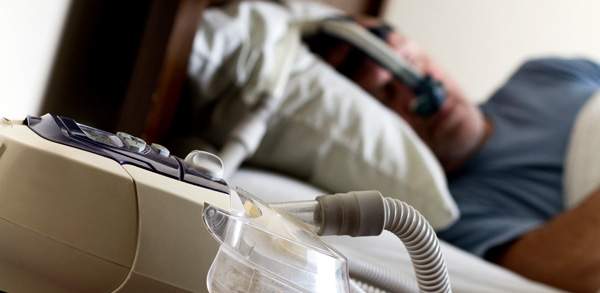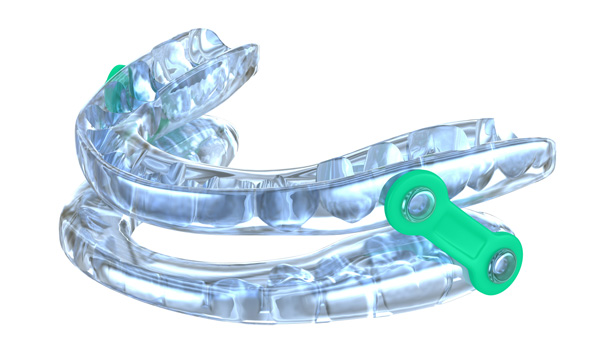
Are oral appliances as effective as CPAP?
Treatment for Obstructive Sleep Apnoea
Obstructive sleep apnoea is a common sleep disorder characterised by the partial or complete blockage of the upper airway during sleep, leading to periods of reduced airflow by at least 30% for 10 seconds or longer (hypopnea), or pauses in breathing (apnoea). These events can cause a drop in blood oxygen levels, potentially contributing to serious long-term health problems such as cardiovascular issues, stroke, and diabetes.
Common symptoms of obstructive sleep apnoea include snoring, daytime sleepiness, morning headaches, and nocturnal waking. Obstructive sleep apnoea is widespread, affecting nearly 1 billion people globally.
Diagnosing obstructive sleep apnoea
Diagnosing obstructive sleep apnoea typically involves a sleep study called polysomnography, which measures the frequency of breathing events per hour to calculate the apnoea -hypopnea index (AHI).
AHI scores are used to classify obstructive sleep apnoea severity:
- mild (5-14 events/hour)
- moderate (15-29 events/hour)
- severe (≥30 events/hour).
Treatment options for obstructive sleep apnoea
Treatment for obstructive sleep apnoea varies based on severity and may include lifestyle changes, weight loss, medications, surgical procedures, or devices such as continuous positive airway pressure (CPAP) machines and oral appliances.

CPAP is often considered the standard therapy. However, some patients find CPAP difficult to tolerate.
Oral appliances function by repositioning the lower jaw forward to enlarge the upper airway and reduce collapse during sleep, helping to alleviate snoring and apnoea. Given the challenges many patients face with CPAP, oral appliances have emerged as an important alternative.
Oral appliances vs CPAP
A newly published umbrella review examined the effectiveness of oral appliances in adults diagnosed with obstructive sleep apnoea compared to other interventions, including CPAP, surgery, and conservative methods. An umbrella review is a type of research that follows rigorous methodology to provide an overview of existing systematic reviews.
The umbrella review, Oral appliance therapy for the management of obstructive sleep apnea in adults, indicated that oral appliances are effective in reducing the AHI when compared to conservative management approaches. However, the evidence strongly suggests that CPAP is more effective than oral appliances for reducing AHI, decreasing the Respiratory Arousal Index (respiratory arousal indicates sleep-disordered breathing), and increasing the minimum blood oxygen saturation levels during sleep.

While CPAP shows greater efficacy under controlled conditions, the real-world effectiveness might vary due to patient adherence.
Patient preference appears to favour oral appliances over CPAP, potentially leading to greater patient satisfaction, better adherence, and longer treatment duration with oral appliances. This higher adherence could mean that oral appliances might achieve comparable or even superior overall clinical effectiveness compared to CPAP in practice, despite CPAP's higher efficacy in studies.

The umbrella review found that CPAP and oral appliances offered comparable improvements for daytime sleepiness, measured by tools like the Epworth Sleepiness Scale. Both CPAP and oral appliances showed moderate evidence for effectively reducing blood pressure in adults with obstructive sleep apnoea.
Based on the findings, while CPAP is considered the gold standard, oral appliance therapy is a viable alternative, especially for individuals unable or unwilling to use CPAP.
The Umbrella Review recommends more research is needed. There is limited data comparing oral appliances to certain surgeries (for example, maxillomandibular advancement) or lifestyle interventions such as positional therapy, pharmacological therapy, and dietary weight loss. Therefore, further research is required, particularly large-scale trials comparing different oral appliance types and exploring newer therapies for obstructive sleep apnoea.
The Umbrella Review is available in the May 2025 Issue of the peer-reviewed journal, JBI Evidence Synthesis.
Oral appliance therapy for the management of obstructive sleep apnea in adults: an umbrella review
Ghosh, Parvathy; Janakiram, Chandrashekar; NK, Sapna Varma; K, Sarika; VV, Ajith Less
JBI Evidence Synthesis. 23(5):876-919, May 2025.